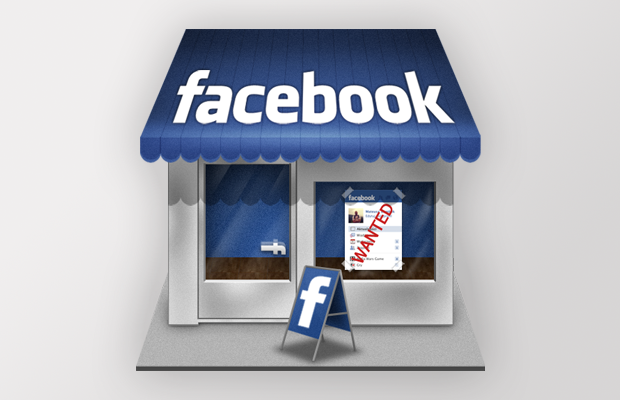14 Landing Page Optimisation Tips for your Small Business
Aisling Brennan, 28-Apr-2016
Landing pages are essential to marketers. 98% of visitors to a website leave without converting. That shocking statistic shows that website owners and marketers have a tremendous opportunity to improve the end user experience for their website. Below are our top tips to help improve landing page experiences:
1. Website Analytics
Interrogate your Google Analytics to identify those pages with higher bounce and exit rates. Focus on those pages by changing a little at a time. Change the offer, or messaging, or graphics, layout, structure. Experiment with small changes.
2. Consistency
The experience should be consistent from advertisement right through to LP for the end user. The messaging, visual design and tone should be consistent with the expectations your user had when they first clicked on the ad. Repeat the core messaging, keep the colour palettes, design and fonts consistent from the ad through to your LP and funnel.
3. Keep messaging concise and on-point
The end user should have a clear idea of what you want them to accomplish on the page (i.e. sign-up for a newsletter, buy a product, download a whitepaper, etc.). Focus the messaging with a concise headline and a clear call-to-action. Always use benefit-led copy that's easy to read and digest. Ensure you match your LP content with the query intent - Search traffic should be directed to keyword specific content.
4. Remember your value proposition
Your value proposition is a promise of value to be delivered. Your customers must believe they will derive this value from the product/service you're offering. Articulate your value proposition clearly and succinctly.
5. Separate LPs by traffic source
Display traffic differs from search traffic, which differs again from social media traffic, as the end user is in a different mind set during each. Put yourself in the end user's shoes and create custom LPs that answers questions applicable for each customer journey, keyword search, and/or stage in buying process.
6. Focus above the fold
Your primary messaging and call-to-action should be above the fold so no scrolling is required for the end user to know exactly what you want them to do. If your LP is long, consider repeating the CTA at regular intervals throughout – however try not to overdo it, as it'll appear spammy.
7. Readability
Be easy to read. Keep your sentences and paragraphs short. People tend to skim online content so write with that in mind. Avoid typos and bad grammar. Get more tips on how to write for a web audience.
8. Use contrasting colours
You want your CTA to stand out on your landing page so use complementary and contrasting colours to achieve this and show your users exactly what you want them to do. Test CTA button colours to see what resonates best.
9. White space
I'm a HUGE fan of white space. Controlling the white space keeps users focused on your content and controls user flow. It gives your design room to breathe and helps your visitors find things easier. Remember each page should have a clear call-to-action so the end user knows exactly what to do. Give them the space to do this.
10. Avoid pop-ups/pop-unders
Personally I despise all types of popups/pop-unders. If I'm interested in a product/service, I don't need to be reminded of that by the use of these intrusive tactics. Remarketing is a much better way of targeting those that abandon your funnel without converting. I know some studies claim that popups/popunders improve conversion rates, but I'm not convinced and think they're just really spammy tactics. Please avoid.
11. Include Testimonials
People like to do business with people they know and trust. We need social proof and often seek validation from peers who've used, liked and recommended a product/service. Try to include real testimonials on each LP - positon below the fold as secondary supporting information.
12. Include Trust Badges & Security Seals
Allay security fears by including recognised trust badges and security seals (i.e. Verisign, TRUSTe, PayPal), if applicable, to build trust and credibility.
13. Remove unnecessary form fields
Usually a major friction point in any funnel, most users hate completing forms. Keep your forms short and only request information you actually need, not information that would be nice to have. And ensure all forms are mobile friendly - there's nothing worse than non-optimised form experience. Consider yourself warned.
14. Test all LPs to validate decisions
Most LPs are based on instinct and opinion. Have a clear conversion rate testing methodology to validate these decisions. Remember CRO is an iterative process so continue to tweak, test and refine each LP. Given most Irish sites have a relatively small volume of traffic, I recommend starting with A/B testing (over multi-variate) in order to ensure your test gets sufficient statistical relevance.
As always, get in touch if you've any questions about getting started with landing page optimisation or Conversion Rate Optimisation. Good luck!
Related Reading:
• Conversion Rate Optimisation - A Beginner's Guide
• Getting Started with Content Marketing for Small Business
• 8 Steps to Successful Writing on the Web - Tips for Small Business
• 20 Tips to Create a GREAT Website: Tips for Small Business
15 Steps to Improve Your Organic Reach on Facebook
Learn how to improve organic reach on Facebook

